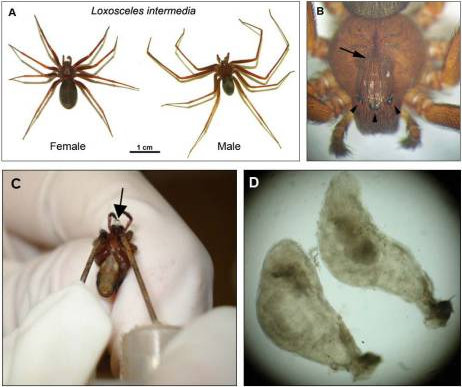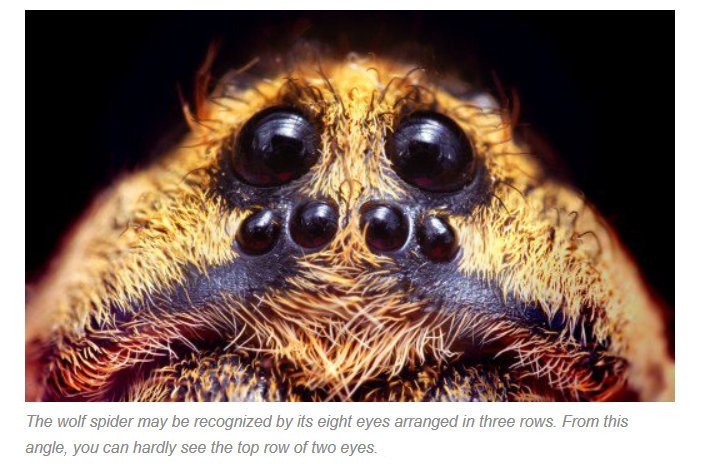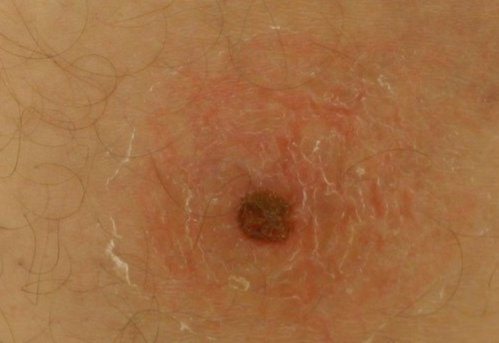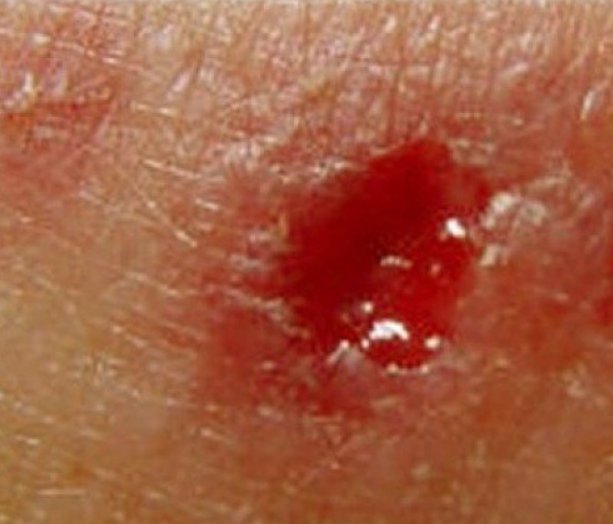Wolf Spiders Bites
Last reviewed by Dr. Raj MD on January 12th, 2022.
Wolf spiders are often confused with the brown recluse. The scientific name of a wolf spider is Lycosidae. A wolf spider bite is seldom critical.
In this article, you will learn about what a wolf spider bite may look like as well as how to treat and prevent such bites.
A quick comparison will be made between the brown recluse and the wolf spider as well as what to do if your baby or pets get bit. Spiders, in general, are hunters and only bite people if provoked. In the United States, there are only two spider bites which can cause great harm and those are the black widow and the brown recluse. (1,2,4,6)
What happens when a Wolf Spider bites you?
If you witness a spider bite always try to collect the spider to show to the medical staff when you go in to check out the bite. (1,4)
Wolf spider vs Brown recluse
It is important to understand the different aspects of each spider in order to identify which the bite came from.
Wolf spiders are usually found out in open fields or planes. They are notable by their light and dark brown coloring. Their stance is low to the ground and they have long legs and large eyes. The female spider is often seen with eggs or with baby spiders. Both the female and male wolf spider can jump and run fast, but if confronted by a person will usually try to run. (1,6)
A brown recluse is also brown but has a shape on its back which looks like a violin. Sometimes this mark is difficult to see due to the light coloring. They are found in the central and southern part of the United States. They are also hunters and will not attack a human unless approached. (4,6)
What does a wolf spider look like ? Pictures

Picture 1 : The size and form difference in the female and male wolf spider.
Image Source : www.ncbi.nlm.nih.gov


what does a wolf spider bite look like


Is a Wolf Spider bite poisonous?
Many reviews have been done on wolf spider bites and usually, the person who has experienced a bite will show signs of pain for a short time. Usually, systemic reactions are rare.
Rather than saying poisonous the better word would be venomous. Their venom is toxic and therefore for the purpose of understanding the reactions you could consider them poisonous. (1,8)
What are the common symptoms of Wolf Spider bite?
- Usually looks just like any other insect bite
- There may be a red bump which has inflamed skin around it
- There will be itching and pain at the site
- Can be some swelling and tissue death when severing
- You may be able to see the puncture wounds from the fangs
- Lymph glands may swell up
- Will only last up to 10 days
- Can be called toxic but is not fatal. (1,3,4,8)
What is the difference between a brown recluse bite and a Wolf Spider bite?
Brown recluse bites show the following:
- Pain and burning could show 10 min after the bite or could show up 8 hours after the bite
- Patient has fever, cold chills, and body pain
- May cause vomiting and hemolysis which is the destruction of blood cells.
- Takes a week to heal
- In the worse cases, the inside of the wound may show signs of necrosis.
a. This area can later turn into an ulcer and takes more than 10 days to stop growing and start healing.
b. The entire healing of the ulcer can take months. - May show a bull’s eye mark.
- Blisters may develop
- Is toxic and only rarely is fatal.(2,3,4,8)
When should I seek medical attention?
- If you are unsure what the bite was from.
- Sever pain
- Stomach cramps
- Ulcer appearing at the site
- Difficulty breathing(3,4)
Why does a Wolf Spider bite cause all these reactions?
A wolf spider uses venom to paralyze its pray. When it bites a human it releases the same venom into the person’s skin. Although a wolf spiders venom is not enough to paralyze a human it is enough to cause slight epidermal reactions.
What are the risk factors of getting Wolf Spider bite?
Keeping your house clean and clear of clutter will help to keep the spiders from living in your home. Being in open fields or in the woods is also a risk factor. Always be aware of your surroundings and where are you placing your hands or arms.
How can I care for a Wolf Spider bite?
- Be sure to always keep the affected area clean and dry
- Sometimes by placing cool damp cloths or ice can help keep the swelling and pain down.
- If it is on an extremity you can keep that extremity (arm or leg) elevated.
- You can try taking over the counter pain medications.
- If available take antihistamines to decrease swelling and itching at the site
- If symptoms last more than a week be sure to contact your doctor (4,6)
Other risk factors: Spider bites may include and consist of other issues and factors including and not limited to the following:
- Bacterial or viral infection introduced by the actual spider or by the fact that the skin has been broken.
- Bacterial or viral infections due to irritation of the area by the person. For example excessive scratching and breaking open the wound.
- Generally, a spider bite will not cause lasting harm. (5)
How to get rid of wolf spiders ?
- Be sure that there are no easy entrances to your house. Check doors and windows to be sure there are not clearly open cracks from the inside.
- Next check from the outside of your house to see if there are any easy entrances into the walls or garage.
- Keep clear of clutter inside and outside of your house. Spiders of all kinds love clutter.
- Keep an eye out for possible places for nesting and be sure to always look before placing your hands in dark areas.
- Keep your house clean and free from other insects. Although you may not see other insects as a danger remember that the spider must eat something. If your house is clear of food for the spider it will no longer want to be there. (11,12)
Resources:
- http://reference.medscape.com/features/slideshow/venomous-spiders
- https://www.ncbi.nlm.nih.gov/pubmed/3829717
- http://www.mayoclinic.org/es-es/diseases-conditions/spider-bites/symptoms-causes/dxc-20204153
- http://www.mayoclinic.org/first-aid/first-aid-spider-bites/basics/art-20056618
- Forging a Poison Prevention and Control System. Institute of Medicine (US) Committee on Poison Prevention and Control.
- https://www.ncbi.nlm.nih.gov/pmc/articles/PMC2214648/pdf/15455808.pdf Washington (DC): National Academies Press (US); 2004.
- https://www.ncbi.nlm.nih.gov/pmc/articles/PMC3202818/ Brown Spider (Loxosceles genus) Venom Toxins: Tools for Biological Purposes
- http://wolfspider.org/wolf-spider-bite/
- Wilderness Medicine: Expert Consult Premium Edition – Enhanced Online Features By Paul S. Auerbach https://books.google.com.mx/books?id=tdTInPqMCjMC&pg=PA991&dq=wolf+spider+bite&hl=en&sa=X&ved=0ahUKEwjd47Sl07DSAhUQ2GMKHTsyA6AQ6AEIRzAH#v=onepage&q=wolf%20spider%20bite&f=false
- https://kidshealth.org/en/parents/spider-bites-sheet.html?ref=search
- http://www.wikihow.com/Get-Rid-of-Wolf-Spiders
- http://www.getridofthings.com/pests/spiders/get-rid-of-wolf-spiders/